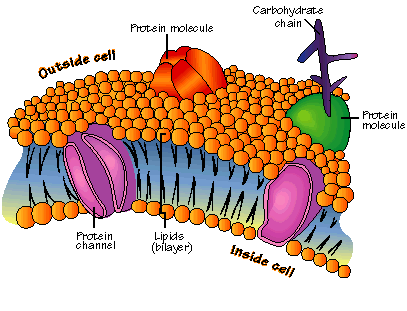Explain cell membrane?
The Cell Membrane : The cell membrane, or plasma membrane, separates the cell from neighboring cells or from the external environment. Both prokaryotic and eukaryotic cells have cell membranes. The cell membrane is composed of two sheet-like layers of phospholipids. Phosholipids are polar molecules that have two distinctly different ends.

One end of each molecule making up the sheet layer has an alcohol attached by a phosphate group. This end, or hydrophilic head (from the Greek words meaning water-loving), is water soluble, resulting in all of the polar ends pointing outward toward the water,
The other end is non-polar, or hydrophobic (from the Greek meaning water-fearing). Being non-polar, the ends of all of the molecules point away from the surrounding water rather than interact with the water. This forms a sheet-like barrier that separates the interior of the membrane from the outside environment. This sheet of molecules forms a sandwich-like structure about 7.5 to 10 nanometers thick.
In the generally-accepted fluid mosaic model, the membrane is composed of a double layer of phospholipids, in which is embedded a variety of proteins. The phospholipid bilayer is somewhat fluid, allowing movement of protein particles within it.
Movement across the cell membrane can occur through a number of different processes, including pinocytosis and phagocytosis. Substances also permeate, or pass through, the cell membrane by diffusion, osmosis, active transport and passive transport.